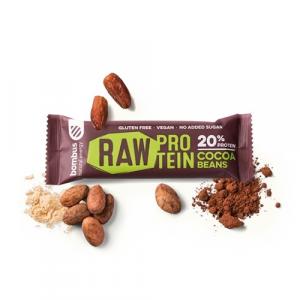
How often to exercise for muscle growth and what factors affect it

How Often to Exercise for Muscle Growth?
In the quest for a stronger and healthier body, one of the most common questions is: How often should I exercise for my muscles to grow? The answer is not as straightforward as it might seem. There is no universal recipe – everyone has a different body, genetics, lifestyle, and goals. However, there are general principles to rely on when it comes to the optimal frequency of exercise for muscle growth.
The idea that the more you exercise, the faster your muscles grow needs some reconsideration. Muscle growth – technically called hypertrophy – occurs mainly during recovery time, away from the actual training. During exercise, we stress the muscles, sometimes even causing minor damage, and it's in the following hours and days that the body responds by repairing and strengthening them.
Twice or Five Times a Week? Frequency is Key, But Not the Only Variable
Research and experience from trainers and athletes suggest that for most people aiming to build muscle mass, it's optimal to train each muscle group twice a week. This doesn't mean working out the whole body twice a week, but rather distributing the training so each body part is worked at least twice during the week.
For beginners, an ideal frequency might be 3 workouts a week, covering the whole body in one day. For example, Monday, Wednesday, and Friday. This approach gives the body enough time to recover while also allowing for regular growth due to repeated stimulus.
More advanced exercisers often choose so-called split training, dividing the days by muscle groups – for example, Monday for chest and triceps, Tuesday for back and biceps, Wednesday off, Thursday for legs, and Friday for shoulders and core. Such a regime can mean 4 to 6 workouts a week, but each part still has enough time for recovery.
However, beware – more frequent training does not automatically mean better results. If the body doesn't get the chance to rest, muscle growth can slow down or even stop. One common mistake among those trying to improve too quickly is exercising too frequently without enough sleep, nutrition, and relaxation. The result is often fatigue, irritability, and stagnation.
What Affects How Fast Your Muscles Grow?
Besides the frequency of training, the intensity of exercise, volume (how many sets and repetitions you perform), quality of recovery, and especially nutrition play crucial roles. Without enough protein and energy, the body has nothing to build new muscle cells from.
A simple practical example: A man who works out his whole body twice a week while maintaining a quality diet with sufficient protein intake (e.g., from legumes, tofu, nuts, and even pure plant-based protein supplements) can achieve better results than someone who trains five times a week but ends the day with pizza and only sleeps four hours a night.
Try our natural products
Additionally, age and hormonal settings must be considered. Younger people (especially men aged 18–30) typically have higher levels of testosterone and growth hormone, which makes gaining muscle mass easier. For older individuals, the process may be slower, but still very effective if supported by the right approach.
The Gym is Not the Only Way – What Works Without Weights?
Many people have built strong and functional bodies without a gym. Calisthenics, or bodyweight exercises, can be just as effective as weight training. Exercises like push-ups, squats, pull-ups, or planks can be done at home or outdoors – and regularity and consistency play the main roles.
For example, a university student who can't fit gym visits into her schedule due to classes and part-time jobs created a three-times-a-week 40-minute routine at home – push-ups, squats, lunges, planks, and a few core exercises. After two months, she observed a firmer body, more strength, and better posture. Nothing complicated, just consistency.
It's also important to focus on progressive overload – gradually increasing the load. In the gym, this could mean adding weights, at home it might mean increasing the number of repetitions or shortening the breaks between sets. Without this stimulus, muscles have no reason to grow.
How to Know If You're Exercising Correctly (or Too Often)?
Signs that the body isn't keeping up with recovery can include prolonged fatigue, decreased strength, muscle soreness even several days after training, or disrupted sleep. On the other hand, signs of a well-set training include gradual increases in strength, better endurance, firmer muscles, and overall vitality.
In recent years, the popularity of exercise has risen as people become aware of the impact of physical activity on mental health. Movement increases endorphin levels, improves sleep, reduces anxiety, and helps with focus. Therefore, exercising regularly makes sense not only for appearance but also as a natural prevention of mental health issues.
Worth mentioning is the quote from famous trainer Dan John who said: "Strength won't let you down. Whether you're 20 or 60, a strong body will help you live better." This holds true without exception.
What Do Experts and Trainers Recommend?
Generally, 2 to 3 workouts per week for each muscle group is optimal for muscle growth in most recreational exercisers. This means that if you go to the gym 4–5 times a week and distribute the training on different parts, your muscles get enough stimulation and time to recover.
If you work out at home and train the whole body at once, then 3 times a week is ample. It's important to monitor technique, progress, and not to neglect warm-up and stretching.
Besides exercise, don't forget about:
- Quality sleep (at least 7–8 hours a day)
- Adequate protein intake (about 1.5–2 g per kilogram of body weight)
- Hydration and healthy, balanced nutrition
- Mental well-being – stress increases cortisol levels, which can slow down muscle growth
In the long run, consistency is more important than intensity. It's better to exercise three times a week all year than to overtrain for one month and then take a six-month break.
Moreover, in the context of a sustainable lifestyle, it makes sense to connect body strength with care for the planet. Choosing eco-friendly workout equipment, such as mats made from natural rubber, clothing from organic cotton, or exercising outdoors instead of an air-conditioned gym, can be health beneficial and environmentally friendly.
Muscle growth isn't a sprint, but a marathon. Therefore, it pays off to find a rhythm that suits not only your body but also your soul in the long run.







